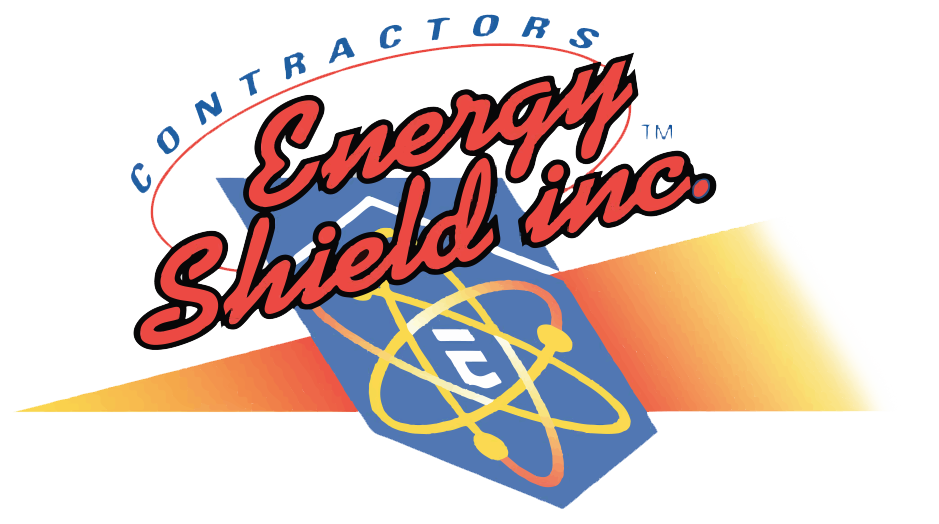Air loss occurs from air leaking through gaps, seams, and cracks in walls, windows, doors, and ceilings. When cold air enters through these small openings, an equal amount of conditioned air is forced out. Making your HVAC system work harder, making your bills more expensive. Energy Shield insulation will fill those gaps, creating a seamless air barrier. Keeping your conditioned air, where it belongs, inside.
Understanding Energy & Air Loss
An Energy Shield Insulation guide to why your energy bills are so high.
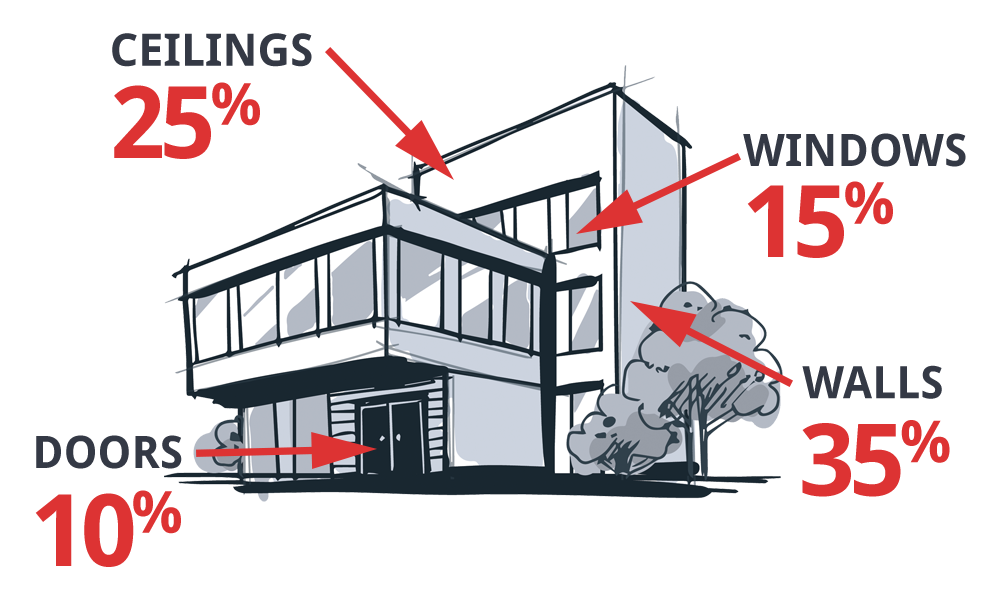
Understanding Energy & Air Loss
An Energy Shield Insulation guide to why your energy bills are so high.

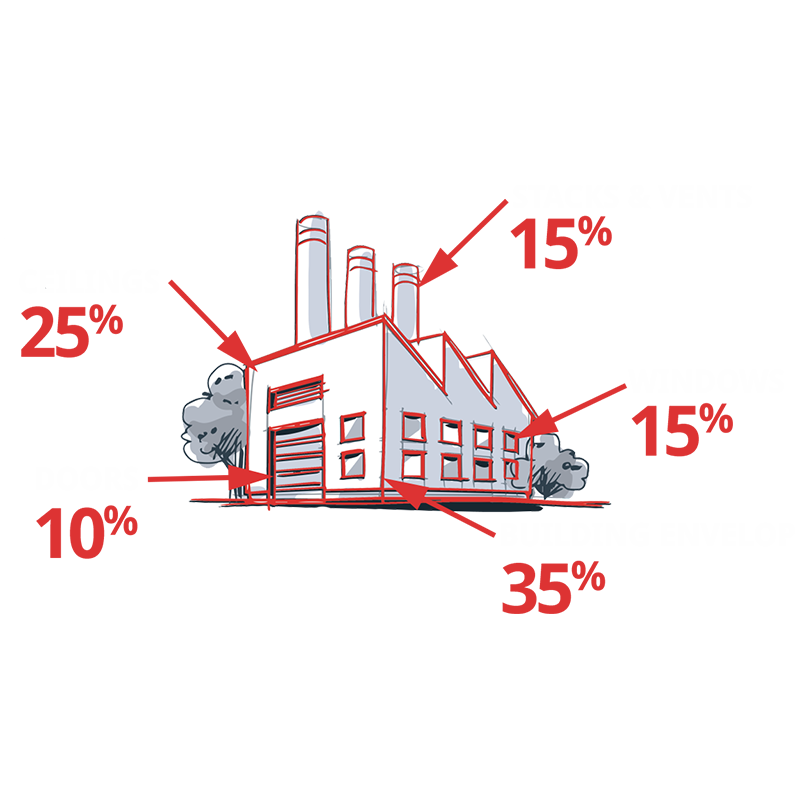
Energy Loss
How you experience energy waste through air loss
Air loss Problems
How air loss affects comfort levels and energy consumption
Wind-Induced air infiltrates the building envelope through small cracks, seams, and fastener holes. As this air infiltrates the building, an equal amount of warm air ex-filtrates the building. At the same time, the Stack Effect occurs, with the warm air rising and with the increase in pressure, the air escapes through whatever it can in the ceiling, attic or roof. Meanwhile, equal amounts of cold air enter the building through crawls, basements, and the lower levels. Air loss accounts for at least 30% of thermal flow across the enclosure in a well-insulated building with fiberglass batt, polystyrene or polyisocyanurate insulation types.
How this affects your pocket book.
The most important part. As all this air is entering and exiting your building, your heater has to return warm conditioned air to compensate for what it’s losing. When that heater is running, so is the meter linked to your bill. Whether it’s an electric heater, or a gas heater, it’s costing you money to have it on all the time. The exact same principles apply to cooling a building.
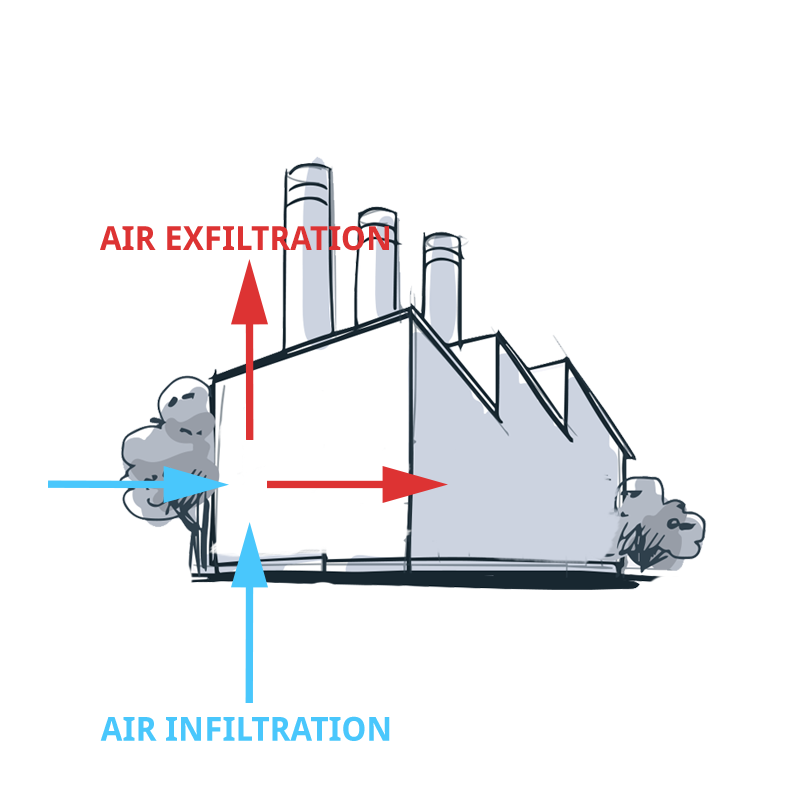
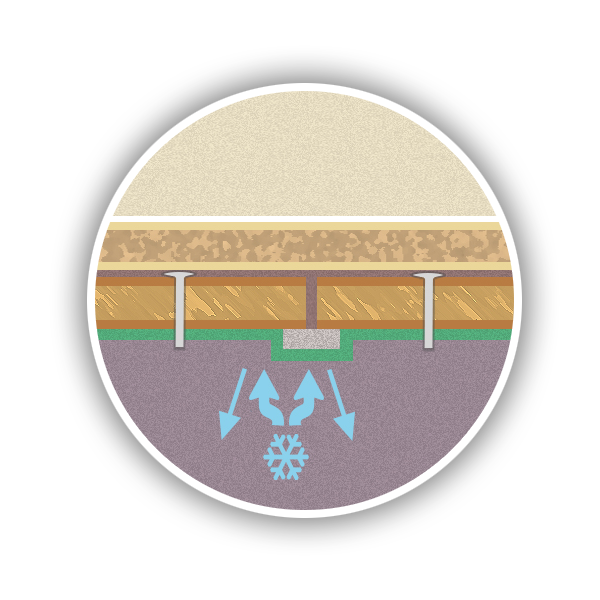
The Effects of Energy Shield Insulation
How Energy Shield Insulation Stops Air Loss
Energy Shield spray foam insulation will fill the gaps, seams, and cracks in the walls, ceiling, and crawl spaces. This creates a seamless air barrier on the inside of the structure and stops air loss. This barrier causes the now conditioned air to fully circulate, rather than escape. The 30% of thermal flow across the enclosure is eliminated.
What Energy Shield Insulation Does For You
Besides stopping air loss and energy waste, not to mention the cost savings, Energy Shield insulation gives you a draft-free, temperature stable, energy-efficient, comfy building. We also perform commercial roofing.
Free Quote & Inspection
You can have one of our trained technicians come out, inspect your building and provide you with a free quote. No obligation to buy.
